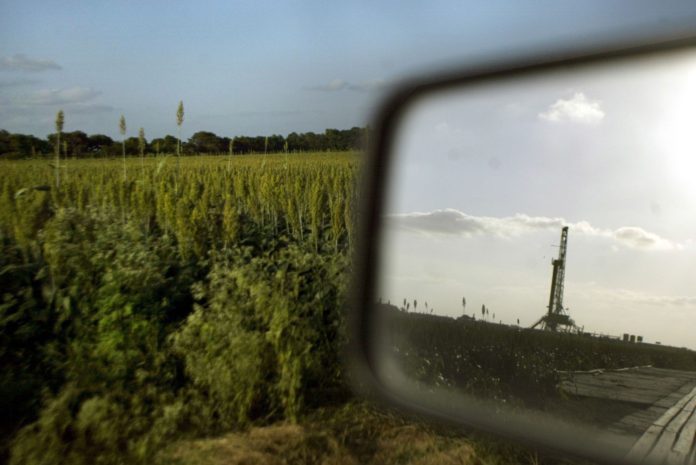Sarah Walls
The oil and gas industry has weathered several rounds of new environmental restrictions by local, state and federal agencies. With prices down, it would seem a good time for a break in the action. Not so.
The latest volley from the front came on Jan. 14. As part of President Barack Obama’s effort to reduce greenhouse gas emissions, the Environmental Protection Agency announced its intent to take a series of steps to reduce emissions of methane, as well as “smog-forming” volatile organic compounds (VOCs) from oil and gas operations. It is worth noting that the EPA did not issue a proposed rule. Yet. (That will come this summer, if EPA meets its own target date.) Rather, EPA has announced its intent to regulate through a series of steps and its desire to negotiate voluntary cuts with industry.
EPA’s goal is to cut methane emissions by 40-45 percent from 2012 levels by 2025. The hazy part is how this goal will be accomplished. Some clues are provided by recent history. The agency already has New Source Performance Standards in place for a few emission sources in the oil and gas patch. In 2014, EPA published five technical white papers which provide detail as to the equipment and processes which emit methane and VOCs, and which may be listed in an expansion of the existing rule. Identified thus far by EPA as candidates for regulation are: completion of wells using hydraulic fracturing, pneumatic pumps, gathering and boosting stations, and leaks from well sites and compressor stations. EPA predicts that the final rule will be issued in 2016.
EPA has also stated that it will seek undefined voluntary efforts by “leading companies” to develop and verify “robust commitments.” This, too, is a little hazy and will, no doubt, be the subject of animated discussions. The hope is that voluntary efforts would obviate the need for future rules. We shall see.
The good news for industry, if any, is that at least initially, the measures expected in the new rule will apply only to new and modified oil and gas sources. However, regulation of new and modified sources may be the camel’s nose in the tent. No one familiar with the rulemaking process would guarantee that existing sources will escape further regulation. States, too, are free to regulate methane emissions from oil and gas sources. Colorado already does so.
EPA is also planning to increase regulation of existing oil and gas sources in those areas deemed to be “nonattainment” for ozone and ground-level smog, as well as certain northeastern states. This will be done by prescribing technologies called Control Techniques Guidelines or CTGs. Right now EPA plans to propose the CTGs this summer and issue final Guidelines in 2016. (If the agency misses its own deadlines, it won’t be the first time.)
EPA’s wish list doesn’t stop there. As only one example, the EPA will be proposing a rule which would aggregate oil and gas sources for air permitting purposes, which could result in more well sites being deemed “major sources” that have to obtain federal air permits. EPA’s prior practice of aggregating “adjacent” oil and gas emission sources was rejected by a federal appellate court in 2012, so EPA is now producing a new rule.
And, of course, EPA is not the only federal agency that has the oil and gas industry in its sights. Expect new initiatives from the Department of the Interior (new standards for gas sites on federal land, chemical disclosures, and endangered species listings) and the Occupational Safety and Health Administration (silica found in proppants), among others. Even EPA admits that the costs to industry are not known.
How to maneuver through the haze? It is important to get involved early in the rulemaking process, before EPA becomes too wedded to its own writing. Sophisticated players, while publicly bemoaning the coming onslaught of new regulations, are already working behind the scenes. If you want to influence the content of the rules before they are ever proposed, consider contacting EPA now and offering to serve on a stakeholders’ review committee. Some companies will file written comments on any proposed rule that is published in the Federal Register, either directly or through their environmental attorney or trade association. Another option is to consult counsel as to the viability of challenging the rules in federal court after they are issued. Environmental managers will want to become more familiar with the EPA white papers and get clues as to what changes may become necessary in their company’s operations and what possible capital expenditures should be budgeted. Industry is also curious about what EPA will suggest in the way of voluntary measures and what incentives or quid pro quo will be offered to the private sector. The EPA’s Fact Sheet states that the EPA is ready to collaborate.
Stay tuned and keep your eyes open for the proposed rules. Check the EPA website’s Regulatory Development and Retrospective Review Trailer, or Reg DaRRT, which lists priority rulemakings. At last check, the rules predicted by the White House announcement on Jan. 14 were not yet listed, but they are not likely to have vanished in the haze!
Sarah Walls is a partner at the Cantey Hanger law firm and leads its environmental practice group. Texas A&M University School of Law student Jeremy Rucker assisted in preparing this article.








